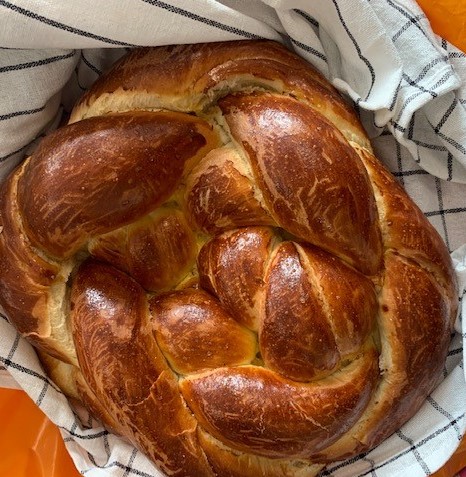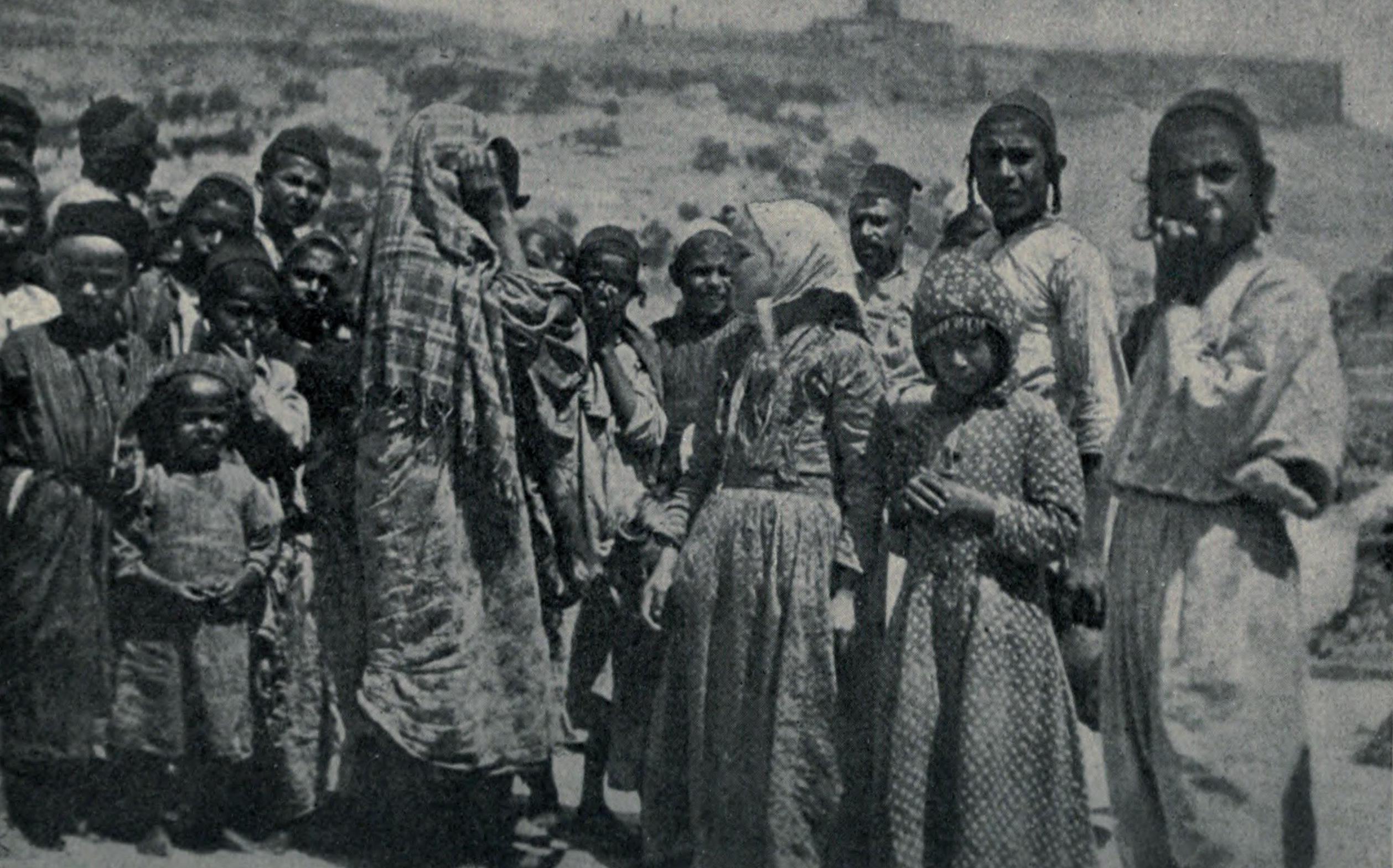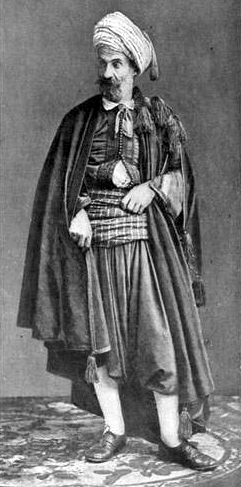|
Pain Petri
Pain petri is a braided bread of Moroccan Jewish origin, that is traditionally baked for Shabbat, the Jewish sabbath, as well as Rosh Hashanah and other Holidays, and is popular among the Moroccan Jewish community of Morocco, France, and Israel. Etymology The name ''Pain petri'' in French translates literally to "kneaded bread", due to the historically long time required to knead pain petri prior to the invention of stand mixers, and other kitchen appliances. Traditionally the women of the Moroccan Jewish community would knead the dough for a long period of time for the pain petri to obtain a lighter consistency. Overview Pain petri is made with an enriched dough, contained flour, egg, oil, sugar, salt, and anise seeds. It is braided into a shape similar to a narrower challah, or it is braided into an oblong ring shape similar to a Jerusalem bagel. It is traditionally served for Shabbat as the bread used for HaMotzi, as well as the bread served with Shabbat meals, it is also ser ... [...More Info...] [...Related Items...] OR: [Wikipedia] [Google] [Baidu] |
Morocco
Morocco (),, ) officially the Kingdom of Morocco, is the westernmost country in the Maghreb region of North Africa. It overlooks the Mediterranean Sea to the north and the Atlantic Ocean to the west, and has land borders with Algeria to the east, and the disputed territory of Western Sahara to the south. Mauritania lies to the south of Western Sahara. Morocco also claims the Spanish exclaves of Ceuta, Melilla and Peñón de Vélez de la Gomera, and several small Spanish-controlled islands off its coast. It spans an area of or , with a population of roughly 37 million. Its official and predominant religion is Islam, and the official languages are Arabic and Berber; the Moroccan dialect of Arabic and French are also widely spoken. Moroccan identity and culture is a mix of Arab, Berber, and European cultures. Its capital is Rabat, while its largest city is Casablanca. In a region inhabited since the Paleolithic Era over 300,000 years ago, the first Moroccan st ... [...More Info...] [...Related Items...] OR: [Wikipedia] [Google] [Baidu] |
Salt
Salt is a mineral composed primarily of sodium chloride (NaCl), a chemical compound belonging to the larger class of salts; salt in the form of a natural crystalline mineral is known as rock salt or halite. Salt is present in vast quantities in seawater. The open ocean has about of solids per liter of sea water, a salinity of 3.5%. Salt is essential for life in general, and saltiness is one of the basic human tastes. Salt is one of the oldest and most ubiquitous food seasonings, and is known to uniformly improve the taste perception of food, including otherwise unpalatable food. Salting, brining, and pickling are also ancient and important methods of food preservation. Some of the earliest evidence of salt processing dates to around 6,000 BC, when people living in the area of present-day Romania boiled spring water to extract salts; a salt-works in China dates to approximately the same period. Salt was also prized by the ancient Hebrews, Greeks, Romans, Byza ... [...More Info...] [...Related Items...] OR: [Wikipedia] [Google] [Baidu] |
Communal Oven
The ''four banal'' (English: common oven) was a feudal institution in medieval France. The feudal lord (French: ''seigneur'') often had, among other banal rights, the duty to provide and the privilege to own all large ovens within his fief, each operated by an ovenmaster or ''fournier''. In exchange, personal ovens were generally outlawed and commoners were thus compelled to use the seigniorial oven to bake their bread. Such use was subject to payment, in kind or money, originally intended merely to cover the costs associated to the construction, maintenance and operation of the oven. Seigniorial ovens were masonry ovens built on the Roman plan and were large enough to hold an entire community's ration of bread. For example, in the hamlet of Nan-sous-Thil (Côte-d'Or, France), the villagers were required to bake their bread at the ''four banal'', as at home they were permitted only a small oven placed under the hood of the chimneypiece, for baking "'' gâteau et flan''". Those re ... [...More Info...] [...Related Items...] OR: [Wikipedia] [Google] [Baidu] |
Challah
Challah (, he, חַלָּה or ; plural: or ) is a special bread of Ashkenazi Jewish origin, usually braided and typically eaten on ceremonial occasions such as Shabbat and major Jewish holidays (other than Passover). Ritually acceptable challah is made of dough from which a small portion has been set aside as an offering. Challah may also refer to the dough offering. The word is biblical in origin, though originally referred only to the dough offering. Similar braided breads such as kalach and vánočka are found across Central and Eastern Europe. Name and origins The term in Biblical Hebrew meant a kind of loaf or cake. The Aramaic word given for its translation is (pl. ), and which word (var. syc, ܓܪܝܨܐ / ܓܪܝܣܐ) Payne Smith defines as "a cake or loaf," or "morsel of bread." In Hebrew, the word challah is derived from the root () which means “hollow,” “space” or “pierced.” In Rabbinic terminology, ''challah'' often refers to the portion ... [...More Info...] [...Related Items...] OR: [Wikipedia] [Google] [Baidu] |
Kubaneh
Kubaneh ( he, כֻּבַּאנֶה) is a traditional Yemenite Jewish bread that is popular in Israel. Kubaneh is traditionally baked overnight to be served for Shabbat morning accompanied by haminados (eggs that are baked in their shells along with the bread), and resek agvaniyot (grated tomato). History A Jewish community existed in Yemen for thousands of years, until the 20th century when pogroms, persecution and discrimination forced the Jewish population to flee Yemen en masse, and to seek refuge in Israel. Only a very small community of Jews remains in Yemen today. Yemenite Jews traditionally made their kubaneh from either sorghum flour or cornmeal during the regular weekdays, but used wheat flour on Sabbath days and holidays. Some would add to the dough either sugar, honey or black cumin. Baking was done in a greased pot, tightly sealed, and left to cook overnight. The kubāneh was eaten the following day while it was still hot, and many of the diners have been known ... [...More Info...] [...Related Items...] OR: [Wikipedia] [Google] [Baidu] |
Yemenite Jewish
Yemenite Jews or Yemeni Jews or Teimanim (from ''Yehudei Teman''; ar, اليهود اليمنيون) are those Jews who live, or once lived, in Yemen, and their descendants maintaining their customs. Between June 1949 and September 1950, the overwhelming majority of Yemen's Jewish population immigrated to Israel in Operation Magic Carpet. After several waves of persecution throughout Yemen, the vast majority of Yemenite Jews now live in Israel, while smaller communities live in the United States and elsewhere. Only a handful remain in Yemen. The few remaining Jews experience intense, and at times violent, anti-Semitism on a daily basis. Yemenite Jews have a unique religious tradition that distinguishes them from Ashkenazi Jews, Sephardi Jews, and other Jewish groups. They have been described as "the most Jewish of all Jews" and "the ones who have preserved the Hebrew language the best". Yemenite Jews fall within the " Mizrahi" (eastern) category of Jews, though they differ ... [...More Info...] [...Related Items...] OR: [Wikipedia] [Google] [Baidu] |
Ethiopian Jewish
The history of the Jews in Ethiopia refers to people in Ethiopia who practice Judaism or have Jewish ancestry. This history goes back millennia. The largest Jewish group in Ethiopia is the Beta Israel, also known as Ethiopian Jews. Offshoots of the Beta Israel include the Beta Abraham and the Falash Mura, Ethiopian Jews who were converted to Christianity, some of whom have reverted to Judaism. Addis Ababa is home to a small community of Adeni Jews. Chabad also maintains a presence in Addis Ababa. Historical Political independence (4th century – 1632) According to the Beta Israel tradition, the Jewish kingdom of Beta Israel, later called the kingdom of Gondar, was initially established after Ezana was crowned as the Emperor of Axum in 325 CE. Ezana, who was educated in his childhood by the missionary Frumentius, declared Christianity as the religion of the Ethiopian empire after he was crowned. The inhabitants who practiced Judaism and refused to convert to Christi ... [...More Info...] [...Related Items...] OR: [Wikipedia] [Google] [Baidu] |
Mouna
Mouna, also known as Mona, is an Algerian Jewish sweet bread of Sephardi origin, similar to challah, kubaneh or brioche, that is traditionally consumed for the Jewish holidays of Mimouna and Shabbat, which is commonly found today in France, and Israel, and has a sweet taste enriched with oil and eggs and often contains anise, sesame, orange, or other citrus. Etymology Mouna derives its name from the Jewish holiday Mimouna, a special holiday traditionally celebrated by Maghrebi Jews to mark the end of the Pesach (Passover) holiday with a feast of sweets and baked goods. Mouna likely comes from the Hebrew word ''emunah'', meaning faith. Overview Mouna is a very popular bread, especially in Algerian Jewish cuisine, but also in Moroccan Jewish, Tunisian Jewish, as well as French Jewish and Israeli cuisine (owing to the large population of Maghrebi Jews in both countries). Mouna is used in similar way as challah is used by other Jewish communities, as the bread served for Sha ... [...More Info...] [...Related Items...] OR: [Wikipedia] [Google] [Baidu] |
Algerian Jewish
The History of the Jews in Algeria refers to the history of the Jewish community of Algeria, which dates to the 1st century CE. In the 15th century, many Spanish Jews fled to the Maghreb, including today's Algeria, following expulsion from Spain and Portugal; among them were respected Jewish scholars, including Isaac ben Sheshet (Ribash) and Simeon ben Zemah Duran (Rashbatz). Algeria won its independence in 1962, and by the Nationality Code of 1963 denied citizenship to all non-Muslims. Algeria's Jews, most of whom had held French citizenship since 1870, left with the pied-noirs. The vast majority moved to France, and the rest moved to Israel. Those who remained resided mostly in Algiers, while some settled in Blida, Constantine, and Oran. In the 1990s, the trials of the Algerian Civil War led most of the few remaining Jews to emigrate. In 1994, the rebel Armed Islamic Group's 1994 declaration of war on all non-Muslims in the country was a decisive event for Jews remaining ... [...More Info...] [...Related Items...] OR: [Wikipedia] [Google] [Baidu] |
Spanish Inquisition
The Tribunal of the Holy Office of the Inquisition ( es, Tribunal del Santo Oficio de la Inquisición), commonly known as the Spanish Inquisition ( es, Inquisición española), was established in 1478 by the Catholic Monarchs of Spain, Catholic Monarchs, King of Spain, King Ferdinand II of Aragon and Queen of Spain, Queen Isabella I of Castile. It began toward the end of the Reconquista and was intended to maintain Catholic Church, Catholic orthodoxy in their kingdoms and to replace the Medieval Inquisition, which was under Pope, Papal control. It became the most substantive of the three different manifestations of the wider Inquisition, Catholic Inquisition along with the Roman Inquisition and Portuguese Inquisition. The "Spanish Inquisition" may be defined broadly as operating in Spain and in all Spanish colonies and territories, which included the Canary Islands, the Kingdom of Naples, and all Spanish possessions in North, Central, and South America. According to modern esti ... [...More Info...] [...Related Items...] OR: [Wikipedia] [Google] [Baidu] |
Hamotzi
Listed below are some Hebrew prayers and blessings that are part of Judaism that are recited by many Jews. Most prayers and blessings can be found in the Siddur, or prayer book. This article addresses Jewish liturgical blessings, which generally begin with the formula: Transliteration: ' Translation: "Blessed are You, our God, King of the universe..." Pronunciation In the transliterations below, ' is used to refer to the sh'vah, which is similar/equivalent to ə; a mid-word aleph, a glottal stop; and a mid-word ayin, a voiced pharyngeal fricative ʕ similar/equivalent to Arabic . Whenever ''`'' is used, it refers to ayin whether word-initial, medial, or final. 'H/h' are used to represent both he, an English h sound as in "hat"; and ḥes, a voiceless pharyngeal fricative ħ equivalent to Arabic . Whenever 'ḥ' is used, it refers to ḥet. Resh is represented by an 'r,' though it's equivalent to Spanish 'r,' Spanish 'rr,' or French 'r,' depending on one's dialect. In al ... [...More Info...] [...Related Items...] OR: [Wikipedia] [Google] [Baidu] |
Stand Mixer
A mixer, depending on the type, also called a hand mixer or stand mixer, is a kitchen device that uses a gear-driven mechanism to rotate a set of "beaters" in a bowl containing the food or liquids to be prepared by mixing them. Mixers help automate the repetitive tasks of stirring, whisking or beating. When the beaters are replaced by a ''dough hook'', a mixer may also be used to knead. A mixer may be a handheld mechanism known as an eggbeater, a handheld motorized beater, or a drill mixer. Stand mixers vary in size from small counter top models for home use to large capacity commercial machines. Stand mixers create the mixing action by either rotating the mixing device vertically (planetary mixers), or by rotating the mixing container (spiral mixers). History The mixer with rotating parts was patented in 1856 by Baltimore, Maryland, tinner Ralph Collier. This was followed by E.P. Griffith's whisk patented in England in 1857. Another hand-turned rotary egg beater was paten ... [...More Info...] [...Related Items...] OR: [Wikipedia] [Google] [Baidu] |






